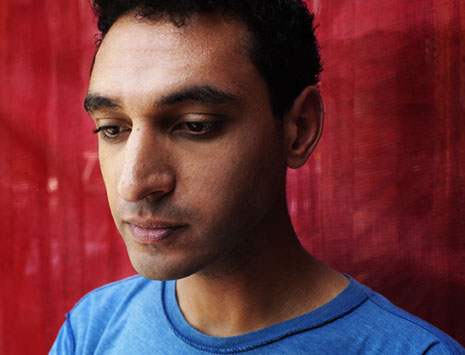AS THE alchemists of old attempted to transform base metal into gold, so all musicians dream of coming up with a really new sound. It’s as difficult as you might imagine. On his dark, dark album 30 Century Man, that dull, slamming sound is Scott Walker punching a side of beef (sounding all the more ominous if you know this). In his orchestral work Komarov’s Fall, Brett Dean has his percussionists shake little pieces of aluminium foil, though the sight tends to provoke giggles in the audience. In Asyla, the composer Thomas Adès lists along with dozens of standard percussion instruments a sack of metal knives and forks laid flat and struck with mallets. If you know what you’re listening for, you can certainly recognise it, but I’m not convinced a similar sound wouldn’t be available to the composer from more orthodox means: muffled sleigh bells, say, or even a tambourine struck on the rim.
You see, beef, alfoil and cutlery are all well and good, but the composer’s real equivalent of the philosopher’s stone is to create new sounds from conventional instruments. Adès has proved himself adept at this too. One of his earliest works was Living Toys, a piece for fourteen instruments that produces an array of surprising and beguiling sounds, sometimes involving unusual playing techniques and, it’s true, the odd unusual object in the percussion department, but generally created by combining wind, brass and string instruments with imaginative flair. You might think that we had, by now, reached the point at which there were no new combinations of violins, flutes and clarinets available to the composer. You’d be wrong.
I have been listening to the Violin Concerto by English composer Morgan Hayes, played by the Japanese violinist Keisuke Okazaki and the Danish Esbjerg Ensemble. It’s the standout work on a disc devoted to Hayes’s music (NMC D163), and what distinguishes it is the composer’s brilliance as an orchestrator. Some of the most vivid moments are created by unusual unisons – instruments combining on a single pitch to produce new sounds. The piece opens, indeed, with a short, loud B flat played by marimba, harp and plucked cello, together with a trumpet with plunger mute (producing a “Wa!”) and a cor anglais, which, after a fortissimo attack, abruptly drops in volume, its B flat sustained like an echo.
To the non-composer, perhaps, this may sound terribly clever and exotic. In fact, the basic gesture of the loud attack and soft sustained note is an old trick, refreshed somewhat by that plunger mute, which gains in significance when it turns out to be a unifying feature of the piece. Following a rather limpid introductory passage in which the B flat turns into B flat major, the remainder of the concerto’s seventeen-minute span contains recurring instances of the “short, sharp shock” followed by its resonating consequence, and each time the gesture is differently coloured, differently achieved. This is a piece full of explosions and lyricism, the solo violin energised and sent spinning aloft by propulsive outbursts from the ensemble.
I didn’t know Hayes’s music before this disc, which, by the way, is otherwise full of fascinating miniatures, but he is clearly a resourceful composer with a teeming imagination, and he has that rare ability to make (in the case of his Violin Concerto) sixteen players of acoustic instruments produce sounds you have never before heard and to arrest the ear with them.
The young American, Mohammed Fairouz, is resourceful in a different way. The first sounds on the CD of his music, Critical Models (Sono Luminus DSL-92146), immediately put me in mind of middle-period Schoenberg, specifically the Wind Quintet. I dare say the instrumentation helped – Litany, the piece in question, is for wind quartet and double bass – but the contrapuntal neoclassicism did the rest. It is, to be sure, an old-fashioned sound, and the first time I listened I was completely distracted from the Islamic call to prayer that the composer’s program note later informed me was the inspiration and source material for the piece. For the record, the adhan is perfectly audible when you are properly attentive!
In fact the sound world of Litany is also misleading in another way. Fairouz’s music is full of variety – in his Four Critical Models alone, the individual movements are approached along contrasting stylistic paths. Because he is still in his mid twenties, there is every chance a more individual voice will emerge, but what is there already – and it is not to be sneezed at – is a commitment to the fundamentals, and this is nowhere more in evidence than in his string quartet, Lamentation and Satire (played by the Lydian Quartet). Eschewing instrumental effect and turning his back on the philosopher’s stone of sonic innovation, Fairouz, for all his playing with musical styles, emerges as one devoted to the traditional substance of music – pitch and duration. And that is refreshing. •




